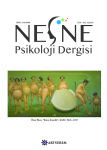Toplumsal Cinsiyet Algısı Ölçeği Ergen Formu’nun Geçerlik ve Güvenirlik Çalışması
The Validity and Reliability of Gender Perception Scale Adolescent Form
Author(s): Erol Esen, Barışcan Öztürk, Diğdem Müge SiyezSubject(s): Gender Studies, Educational Psychology, Social psychology and group interaction, Developmental Psychology, Social differentiation, Demography and human biology
Published by: Sanat ve Dil Araştırmaları Enstitüsü
Keywords: gender perception; high school students; validity; reliability;
Summary/Abstract: The main purpose of this study was to investigate the reliability and the validity of the Gender Perception Scale (GPS) for adolescents. Another purpose was to investigate whether the gender perception of high school students differs in terms of certain socio-demographic variables (sex, school type, monthly family income, the employment status of the mother and parents’ education levels) The scale was administered to a total of 823 adolescents (451 girls, 372 boys) and the test-retest reliability analysis was carried out among 118 of the 823 adolescents. Confirmatory Factor Analysis (CFA) verified a two-factor model which is different from the original scale. Resulting factors were traditional gender perception and equalitarian gender perception. The Goodness of fit indices of the two-factor hypothetic model was found to be as follows: χ2=500.15, df=168, χ2 /df=2.97, GFI=.92, AGFI=.90, CFI=.91, RMSEA=0.06, SRMR= .05. Also, we found that the differences between the average scores of the groups within the upper and lower 27% of the scale were statistically significant. The internal consistency coefficients were sufficient for each subscale (ranging from .80 to .86) and the total scale (α= .89). In addition, the test-retest reliability coefficients for equalitarian gender perception subscale (.73), and traditional gender perception subscale (.80) were determined to be within the acceptable limits. As a result, the GPS was found to be valid and reliable and its psychometric characteristics were acceptable. In addition, both equalitarian and traditional gender perception subscale scores were significantly different in terms of sex, school type, monthly family income, the employment status of the mother and parents’ education levels.
Journal: Nesne-Psikoloji Dergisi
- Issue Year: 6/2018
- Issue No: 12
- Page Range: 144-173
- Page Count: 30
- Language: Turkish

